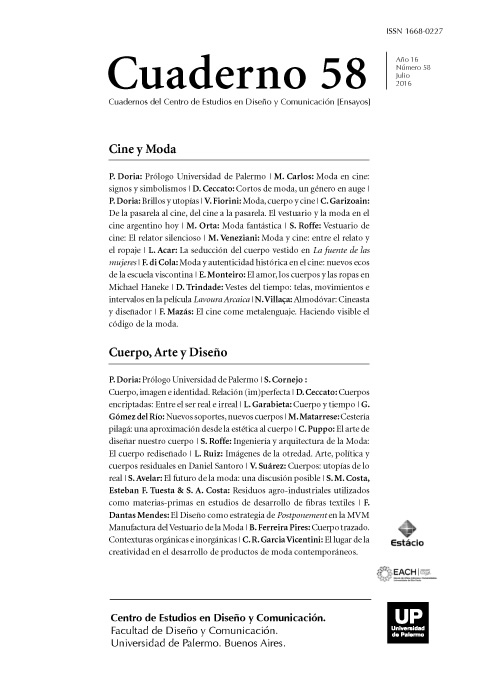Ingeniería y arquitectura de la Moda: el cuerpo rediseñado
Abstract
Why along the history of costume men and women have sought to modify their bodies through the addition or deletion of volumes, the changes to natural shapes and even the use of non functional structures?We can group the main objectives for resignify the body into four main axis: luxury-social belonging, femininity - motherhood, power-masculinity and object of desire-chastity. To decode this architecture and engineering with a historical and cultural journey through fashion is to see the body structurally modified to denote any of these four aspects as cultural precepts of every age and culture analyzed.
References
Bernis Madrazo, C. (1962). Indumentaria española en tiempos de Carlos V. Madrid: Instituto Diego Velázquez, CSIC.
(1956). Indumentaria medieval española. Madrid: Instituto Diego Velázquez, CSIC .
Boucher, F. & Deslandres, Y. (1987). 20,000 years of Fashion. New York: H. N Abrahams.
Descalzo, A. (2004). Jubón del siglo XVII. Madrid: Museo del Traje.
Hart, A. & North, S. (1998). Historical Fashion in Detail: The XVIIth. and XVIIIth. Century. London: V & A Publications.
Holbein, H. (1533). Los embajadores. Londres: National Gallery.
Laver, J. (1992). Breve Historia del traje y la Moda. Madrid: Editorial Cátedra.
Los autores/as que publiquen en esta revista ceden los derechos de autor y de publicación a "Cuadernos del Centro de Estudios de Diseño y Comunicación", Aceptando el registro de su trabajo bajo una licencia de atribución de Creative Commons, que permite a terceros utilizar lo publicado siempre que de el crédito pertinente a los autores y a esta revista.


